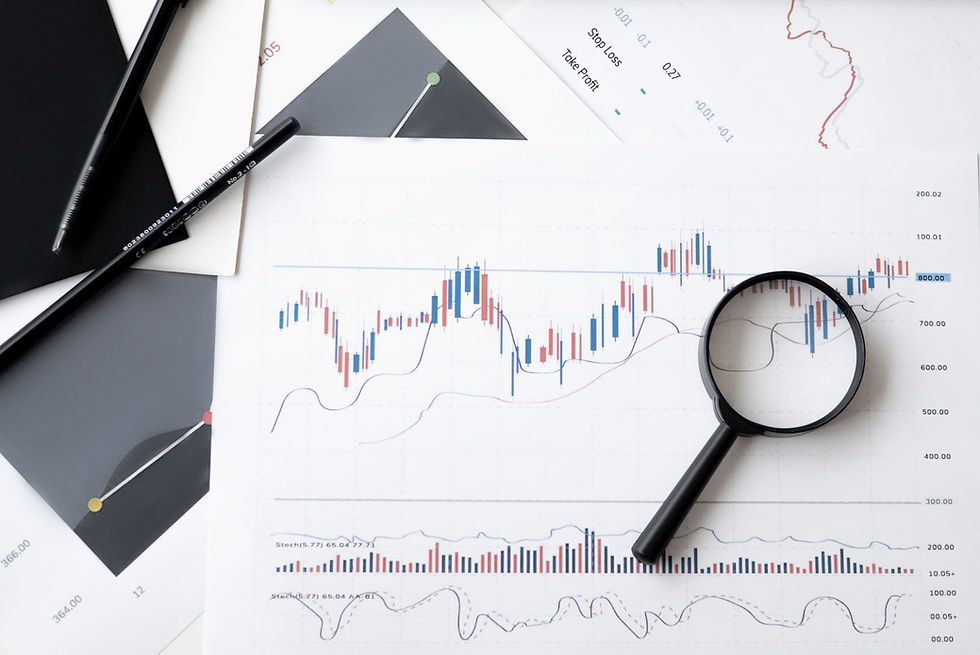If You Like Rollercoasters, You’ll Love Investing in Stocks
- Jack and Guy

- Oct 4
- 3 min read
Updated: Oct 12

Let's be honest: there's nothing quite like investing in the stock market. You're pitting your brain and your research against a massive, invisible beast—the market itself. But here's the secret: you will quickly become a pro in this sport, you will benefit from it, and (dare we say) you’ll even enjoy it.
However, you better strap in! Because if you enjoy the thrill, the anxiety, and the eventual relief of a rollercoaster, you'll feel right at home with stock investing.
The Click, Click, Rachet... and the Drop
The experience of investing over time perfectly mirrors a classic rollercoaster ride:
The Ascent: Most days, or months, your portfolio sounds like the click, click, rachet of the coaster slowly ascending. The price goes up steadily, and you feel good.
The Drop: Then, suddenly, it turns and twists as you go down. The price drops sharply due to bad news, a market correction, or global fear.
The Bounce: You do not fall out! Soon enough, you hear the click, click, rachet of a new ascent.
This cycle takes place over days, months, and years. The key difference between the stock market and a real ride is that in the market, you can always say "stop" and get off. Selling is always an option, but it's one we strongly suggest you ignore and keep going.
The Case Study: Advanced Micro Devices (AMD)

To see this volatility in action, let’s look at a real-life five-year chart.
Take Advanced Micro Devices (AMD), whose stock has achieved glory under the current CEO, Dr. Lisa T. Su, who has been extraordinarily adept at "teaching the elephant to dance."
Imagine you were on a rollercoaster following that stock price.
If you had bought AMD near its peak in late 2021, you would have been severely tempted to exit as the stock price dropped to close to $50 in 2022. That drop would have felt like the bottom falling out!
However, had you ignored the fear, and better yet, bought a few shares more as you went along, you'd be sitting pretty today. By now, the stock price would be back to (or far above) where it was four years ago, and you would have made substantial gains on the shares you purchased during those low trough years.
Your Superpower: Dollar-Cost Averaging
Because you are a long-term, individual holder—you don't work for a firm, you are your only supervisor—you have the unique ability to ignore short-term price swings and buy more when others are fearful.
This strategy is called Dollar-Cost Averaging (DCA). It's the simple act of continually buying small amounts of a stock, regardless of price.
When the stock goes down, your fixed amount of money buys more shares, lowering your overall cost.
When the stock goes up, you already own the lower-cost shares.
This strategy would have given you a nice profit in AMD by today.
Choose Your Ride Wisely: Old vs. New Economy
However, DCA only works if you choose a good ride to begin with.
If you look at the price chart for a stock like The Kraft Heinz Company over the same period, you would have actually added to your losses by dollar-cost averaging. That rollercoaster was, frankly, a dull and disappointing ride.

Our advice is clear: Buy new economy companies. Look for companies that are growing, adapting, and innovating. They are the ones that give you the rewarding long-term "click, click, rachet" that eventually leads to a powerful payoff.
So, embrace the volatility. Strap in for the twists and turns. Ignore the temptation to bail out, keep adding to great companies, and enjoy the long, exhilarating ride!



Comments